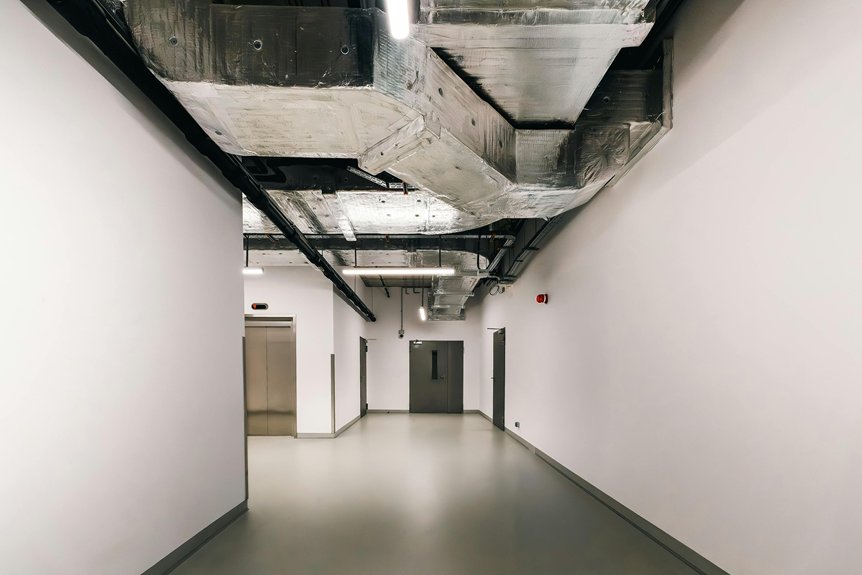Rectangular ductwork is a prevalent option for air distribution in both commercial and residential buildings in the UK. Its design makes it straightforward to install and particularly well-suited for confined spaces such as ceilings and walls. Constructed from materials like galvanised steel, stainless steel, or aluminium, it provides robust durability and resistance to corrosion.
Proper sizing and reinforcement are crucial to prevent leaks and ensure optimal airflow throughout the system. Adhering to established standards for construction and installation is essential for maintaining the efficiency of HVAC systems.
A thorough understanding of rectangular ductwork can significantly enhance HVAC performance, allowing for better air quality and energy efficiency. Exploring the various options available will aid in selecting the most suitable solutions tailored to specific requirements.
Materials and Construction Standards
Materials and construction standards for rectangular ductwork are vital to guarantee that these systems are robust, efficient, and safe. Commonly used materials include galvanised steel, which provides strength and resistance to corrosion, particularly in commercial HVAC systems.
Stainless steel grades 304 and 316 are preferred in settings where hygiene or corrosion is a concern, such as laboratories or kitchens. Aluminium is selected for its lightweight properties and effectiveness in salty or corrosive environments, adhering to specific standards for thickness and reinforcement.
The SMACNA guidelines offer comprehensive tables that detail gauge, reinforcement, and joint spacing, tailored to pressure and material type. Reinforcement techniques, such as stiffeners or tie rods, are determined by the size of the duct and its pressure classification.
Moreover, proper fabrication practices, including meticulous workshop procedures and standardised joint systems, are essential to ensure the production of high-quality, reliable duct systems. Additionally, adherence to these standards helps prevent leaks and structural failures, ensuring long-term performance. This attention to detail contributes to the durability and efficiency of HVAC installations, ultimately enhancing performance and safety standards in the built environment.
Design Considerations and Sizing
Design considerations and sizing of rectangular ductwork are essential for ensuring efficient airflow, structural integrity, and a proper fit within the available space. Selecting the appropriate dimensions involves balancing airflow requirements with spatial constraints and installation expenses. Minimis ing high aspect ratios is key to reducing noise and vibrations, while maintaining a low width-to-height ratio helps to decrease pressure loss. Properly sizing ducts in accordance with recognised guidelines aids in managing pressure drops caused by friction and turbulence. Duct fabrication standards emphasize the importance of precise measurements and consistent dimensions to ensure compatibility and ease of assembly. Reinforcements and appropriate support spacing are critical to prevent issues such as leaks, collapse, or sagging. The choice of materials, fabrication capabilities, and spatial limitations all significantly influence duct size and design. Careful planning ensures that ducts are robust, efficiently sized, and compatible with their environment, promoting safe, effective, and seamless integration within HVAC systems.
| Aspect Ratio | Shape Considerations |
|---|---|
| Keep ≤ 1:4 | Fits tight spaces better |
| Avoid very high ratios | Facilitates branch connections |
| Low ratios reduce noise | Simplifies assembly |
Applications and Performance Insights
Rectangular ductwork is commonly found in various building settings across the UK due to its ability to fit well into tight spaces and its ease of installation.
It’s particularly popular in both commercial and residential properties where space is limited, such as above ceilings or along walls.
This type of ducting offers superior air distribution and insulation compared to round ducts, especially in low-pressure systems, making them energy-efficient.
Additionally, rectangular ducts are cost-effective and straightforward to maintain, contributing to the longevity of HVAC systems.
However, it’s worth noting that they tend to generate more noise and require more material during fabrication.
These ducts are particularly effective in commercial environments, as well as in residential areas where installation around ceilings or narrow walls is necessary.
The thoughtful design of rectangular ductwork, combined with practical fittings and insulation options, makes it a versatile choice for various applications.
Rectangular ductwork is also easier to connect with other duct types using specialized fittings, which enhances system flexibility.
Conclusion
Rectangular ductwork provides versatile solutions for airflow in a range of systems, with material selections and construction standards ensuring both durability and efficiency. Proper design and sizing are essential to optimise performance and prevent issues such as noise or leaks.
Understanding the applications of rectangular ductwork is vital in selecting the appropriate option for specific requirements, whether in commercial or residential settings.
Overall, well-designed rectangular ducts deliver reliable airflow, making them a practical choice for HVAC installations across the UK. Their efficiency and adaptability make them a preferred solution for managing air circulation effectively.

